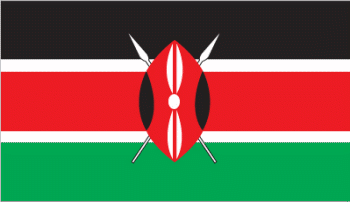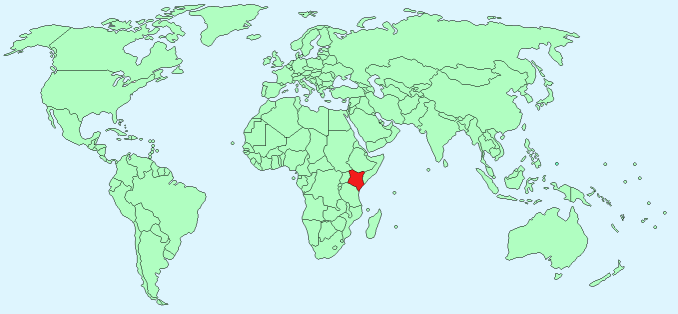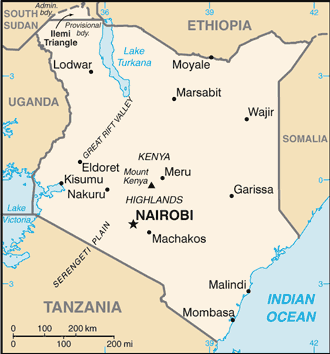Kenya


Continent – Africa
Region – Eastern Africa
Size – 580,367 km²
Geography – low plains with central high lands
Language – Kiswahili and English are official languages
Religion – Christianity 82.5%, Traditionalists 1.6%, None 2.4%other 14%
Monetary Unit – Kenyan shilling
Natural Resources – limestone, soda ash, salt, gemstones, fluorspar, zinc, diatomite, gypsum, wildlife, hydropower
Agriculture – tea, coffee, corn, wheat, sugarcane, fruit, vegetables; dairy products, beef, fish, pork, poultry, eggs
Industry – agricultural products, horticulture, oil refining; aluminum, steel, lead; cement, commercial ship repair, tourism, consumer goods

Neighbouring Countries – Ethiopia, Somalia, South Sudan, Uganda, Tanzania
Population – 45,010,056 (2014 estimate)
Population Growth Rate – 2.11%
Average Life Expectancy – 63.52
Capital City – Astana (835,153)
Highest Mountain – Mount Kenya (5,199m)
Longest River – Tana (708 km)
Climate – Tropical – Hot all year 20°C to 33°C
Yearly Rainfall – 12 cm (approx) mostly in April and May
Plant Life – savanna grasslands, mangrove, coconut, grasses, thorn trees, African camphor, African olive, podo, and pencil cedar
Animal Life – Elephant, rhinoceros, lion, zebra, giraffe, buffalo, hippopotamus and wildebeest
Bird Life – numerous birds including cranes, flamingos, ostriches, and vultures
Harvard Reference for this page:
Heather Y Wheeler. (2015). Kenya. Available: https://www.naturalhistoryonthenet.com/Facts_Figures/Country_Facts/kenya.htm. Last accessed Monday, July 18, 2016
Facts and Figures Pages
